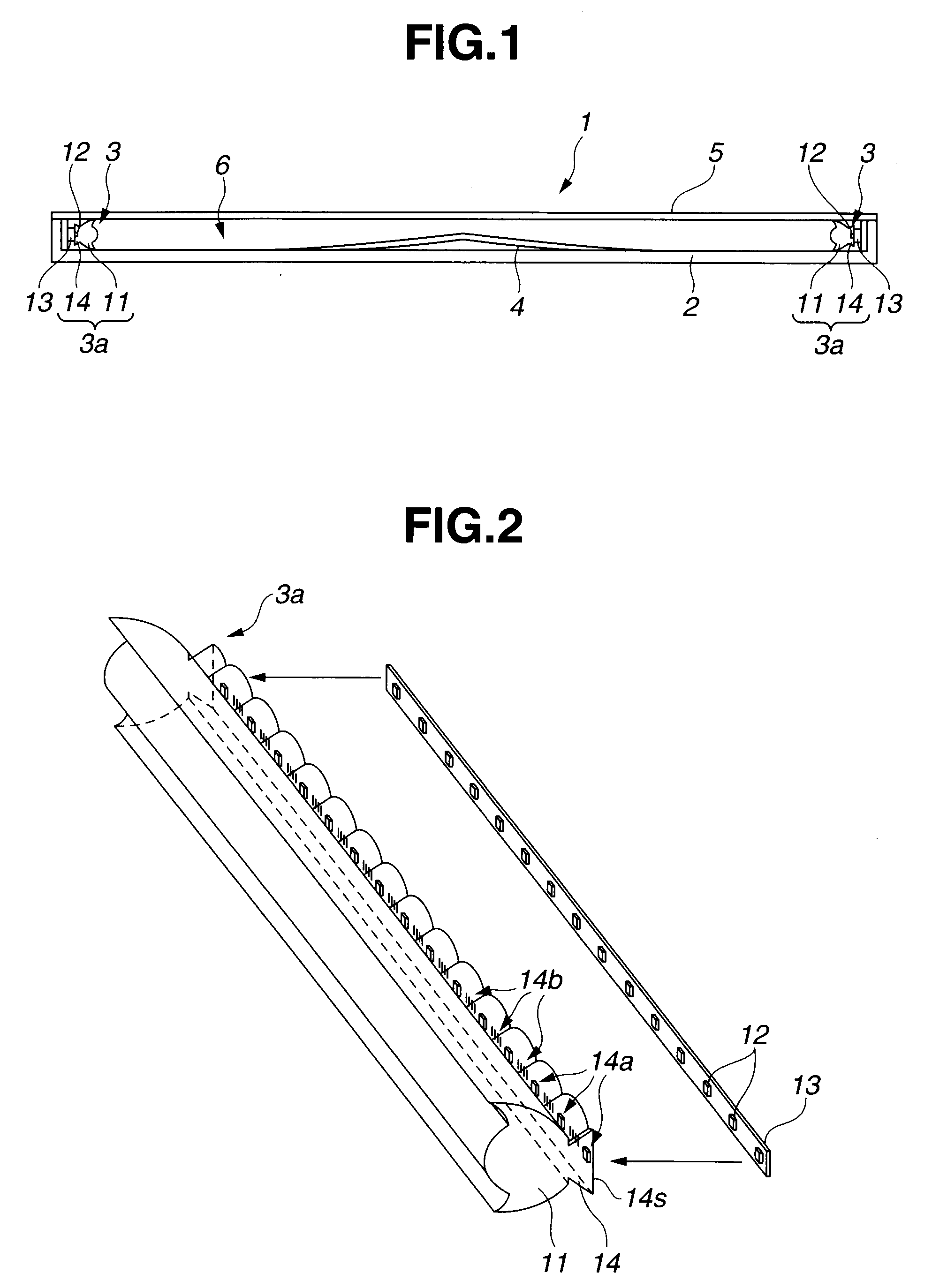Optical element for arrayed light source and light emitting device using the same
an arrayed light source and light emitting device technology, applied in lighting and heating devices, instruments, condensers, etc., can solve the problems of heavy light guide plate, inability to make the hollow cavity portion thinner, and the whole device becomes thick
- Summary
- Abstract
- Description
- Claims
- Application Information
AI Technical Summary
Benefits of technology
Problems solved by technology
Method used
Image
Examples
Embodiment Construction
[0035]Hereinafter, an embodiment of the present invention will be described with reference to the drawings.
[0036]First, a description will be given of a light emitting device as a hollow-cavity type planar luminaire of the present embodiment. FIG. 1 is a sectional view of a light emitting device of the present embodiment.
[0037]As shown in FIG. 1, a box-shaped light emitting device 1 whose luminous surface has a rectangular shape, has two light sources 3 as two light emitting portions arranged on two side face parts of a box-shaped case 2, a reflecting member 4 having a reflecting surface provided in a bottom face portion inside the case 2, and a diffuser 5 as a luminous surface member which receives reflected light from the reflecting member 4 and emits the light to outside the light emitting device 1. A hollow cavity region 6 is formed between the reflecting member 4 and the diffuser 5. The reflecting member 4 has two prescribed inclined portions each of which bends downward from a...
PUM
 Login to View More
Login to View More Abstract
Description
Claims
Application Information
 Login to View More
Login to View More - R&D
- Intellectual Property
- Life Sciences
- Materials
- Tech Scout
- Unparalleled Data Quality
- Higher Quality Content
- 60% Fewer Hallucinations
Browse by: Latest US Patents, China's latest patents, Technical Efficacy Thesaurus, Application Domain, Technology Topic, Popular Technical Reports.
© 2025 PatSnap. All rights reserved.Legal|Privacy policy|Modern Slavery Act Transparency Statement|Sitemap|About US| Contact US: help@patsnap.com



